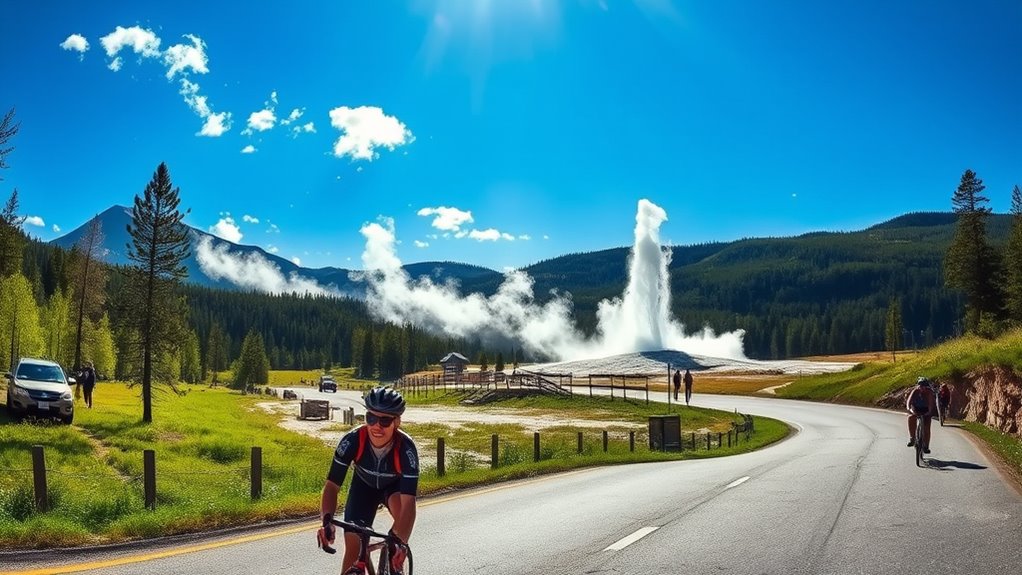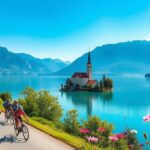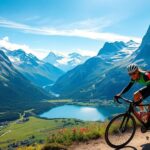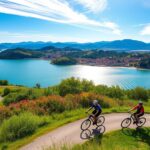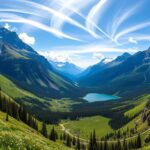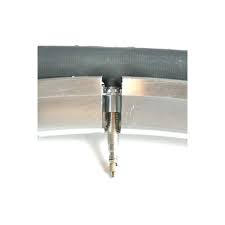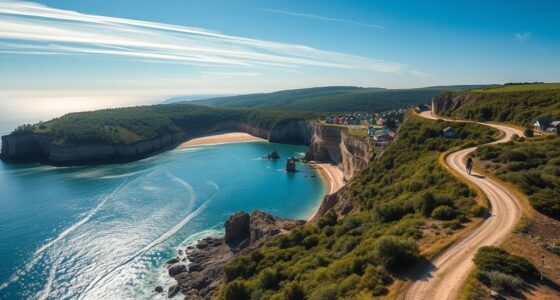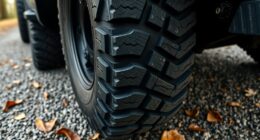Cycling through Wyoming’s Yellowstone roads is an unforgettable adventure. You’ll pedal past stunning geysers and vibrant geothermal features while surrounded by breathtaking landscapes. Choose routes like the Grand Loop Road for iconic sights or the lakeside path along Yellowstone Lake. Remember to dress in layers, keep bear spray handy, and respect wildlife distances for a safe ride. If you’re curious about the best routes and tips for this amazing experience, there’s plenty more to discover!
Key Takeaways
- Explore the Grand Loop Road, a 142-mile route connecting major geysers and geothermal features in Yellowstone.
- Cycle the scenic 20-mile route around Yellowstone Lake for breathtaking lakeside views.
- Visit iconic geysers like Old Faithful and Grand Prismatic Spring while adhering to safety regulations.
- Dress in layers and carry essential safety gear, including helmets and bear spray, for a safe ride.
- Maintain a safe distance from wildlife and use binoculars for observation to ensure a secure cycling experience.
Planning Your Cycling Adventure
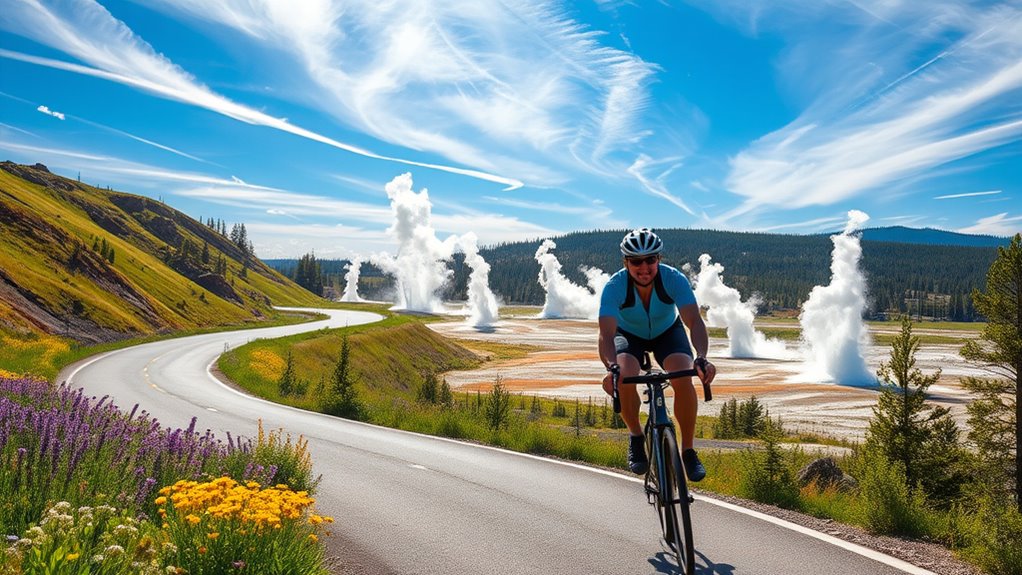
When you’re gearing up for your cycling adventure in Yellowstone, it’s essential to plan ahead to make the most of your experience. Start by noting the $20 entrance fee, which covers you for seven days.
While individual cyclists don’t need permits, groups should reach out to the Visitor Services Office. Keep in mind that camping is limited to developed campgrounds, so reserve early.
Weather can be unpredictable in spring and fall, so dress in layers and pack safety gear like helmets and high-visibility clothing. It’s crucial to follow traffic rules and ride in single file, particularly during daylight hours.
Don’t forget to carry bear spray and a bike repair kit for emergencies—safety comes first!
Exploring Popular Routes
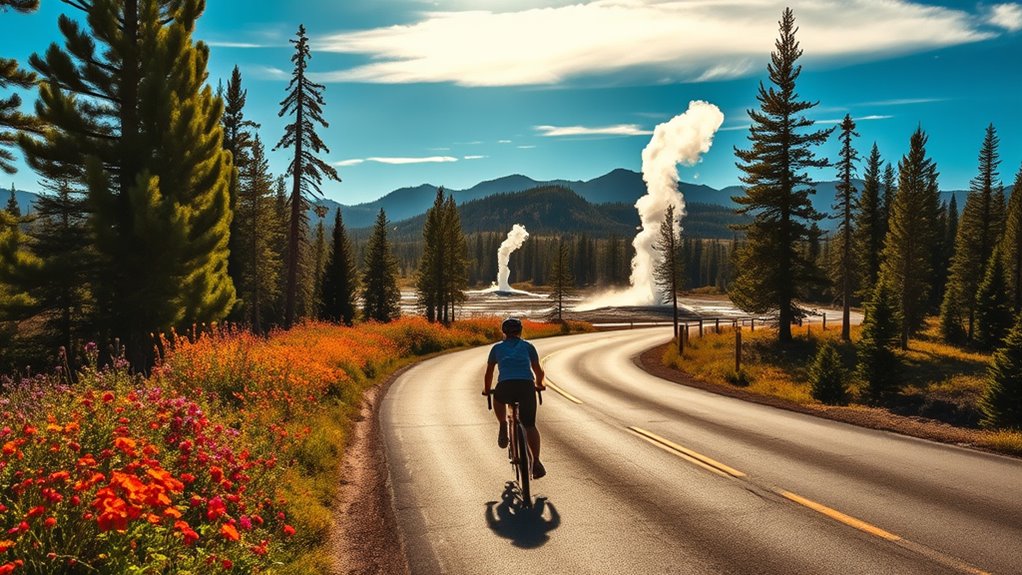
As you set out to explore Yellowstone’s breathtaking landscapes, you’ll find a variety of cycling routes that cater to all skill levels and interests.
The Grand Loop Road offers a 142-mile adventure, connecting major attractions like Mammoth Hot Springs and the Grand Canyon of the Yellowstone.
For a shorter ride, try the 14-mile round trip from the West Entrance to Madison Junction, passing the scenic Firehole River.
If you prefer lakeside views, the Yellowstone Lake route spans 20 miles.
The Old Faithful to West Thumb trail is mostly flat, perfect for everyone.
For those seeking a challenge, tackle the steep climbs of the Beartooth Highway.
No matter your choice, each route reveals Yellowstone’s stunning beauty.
Discovering Geothermal Wonders
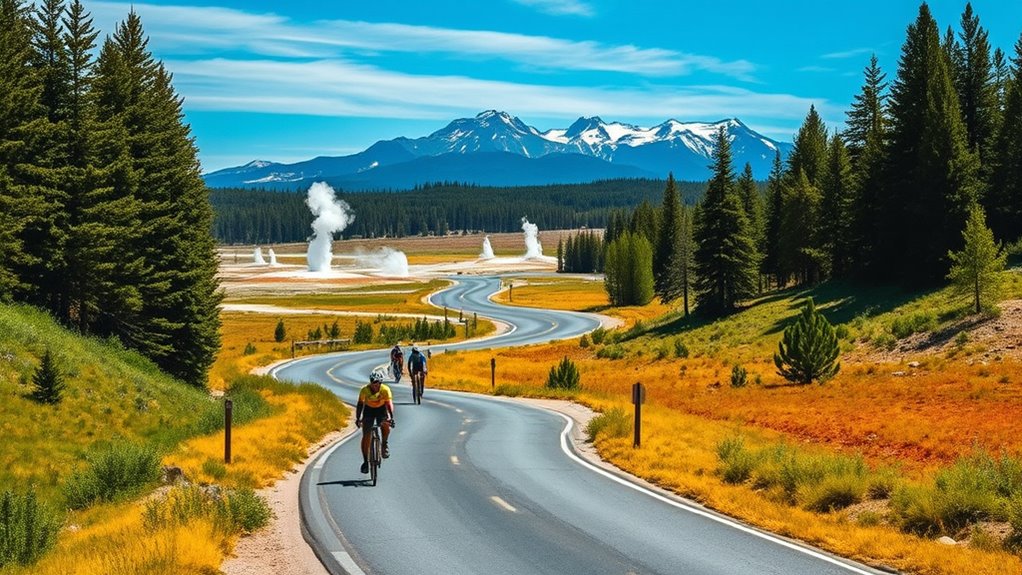
After exploring the scenic routes of Yellowstone, turn your attention to the park’s geothermal wonders that make it truly unique.
With over 10,000 hydrothermal features, you’ll find geysers, hot springs, mudpots, and fumaroles scattered across the landscape. The Yellowstone hotspot provides the heat that fuels this remarkable activity, where rain and snowmelt penetrate the ground, creating superheated water that rises to the surface.
Don’t miss iconic sites like the Grand Prismatic Spring and Old Faithful in the Upper Geyser Basin. As you marvel at these features, remember to stay on designated paths for your safety.
The vibrant colors, shaped by thermophilic microorganisms, showcase the incredible diversity of life thriving in these extreme conditions.
Encountering Wildlife Safely

Exploring Yellowstone’s vast landscapes offers incredible opportunities to encounter wildlife, but you’ll want to do so safely.
Maintain at least 100 yards from bears and wolves, and 25 yards from bison and elk. Approaching closer is illegal and can disturb these animals. Use binoculars or telephoto lenses for a better view without intruding.
Stay inside your vehicle during wildlife jams, especially with bison. Never feed or approach wildlife, as this can provoke dangerous interactions. Be aware of animal behaviors, like huffing bears or aggressive elk during rutting season.
Carry bear spray while cycling and make noise to avoid surprising wildlife. Riding in groups reduces risks, and staying alert to your surroundings helps keep both you and the animals safe.
Navigating Cycling Challenges
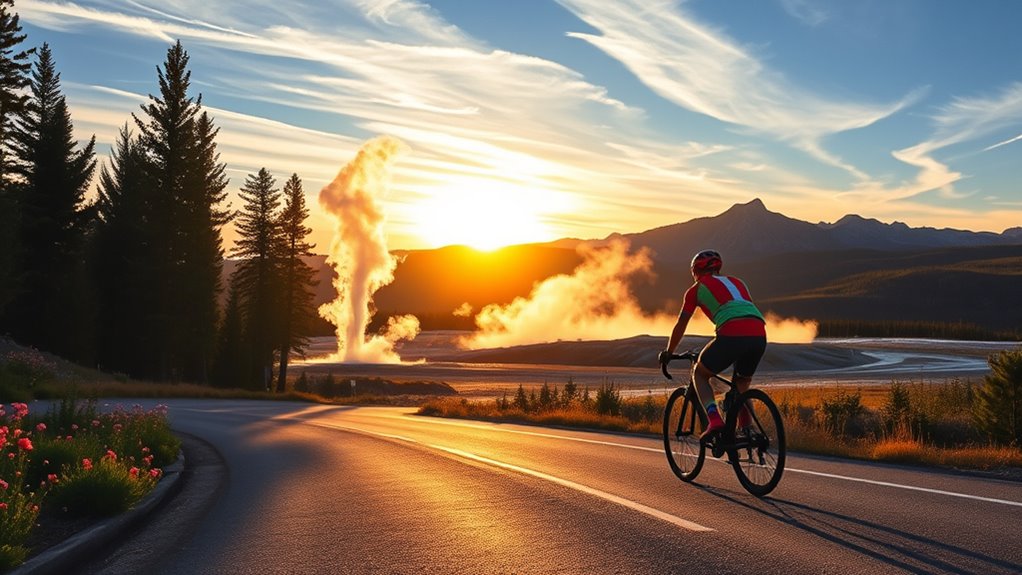
Navigating the challenges of cycling in Yellowstone can be rewarding yet demanding, especially with its diverse terrains and unpredictable weather.
You’ll encounter everything from alpine meadows to steep climbs on the Beartooth Highway. Some roads are paved, while others are gravel, so you’ll need to adjust your bike setup accordingly.
Be prepared for sudden temperature changes and possible snowstorms, even in spring and fall. Limited bike trails mean you’ll primarily cycle on main roads, which open to cyclists before cars in spring.
Ensure you assess your fitness level and pack enough food and water, as services are sparse.
Lastly, remember to follow regulations, including riding only during daylight and avoiding backcountry trails. Your adventure awaits!
Enjoying Seasonal Cycling Experiences
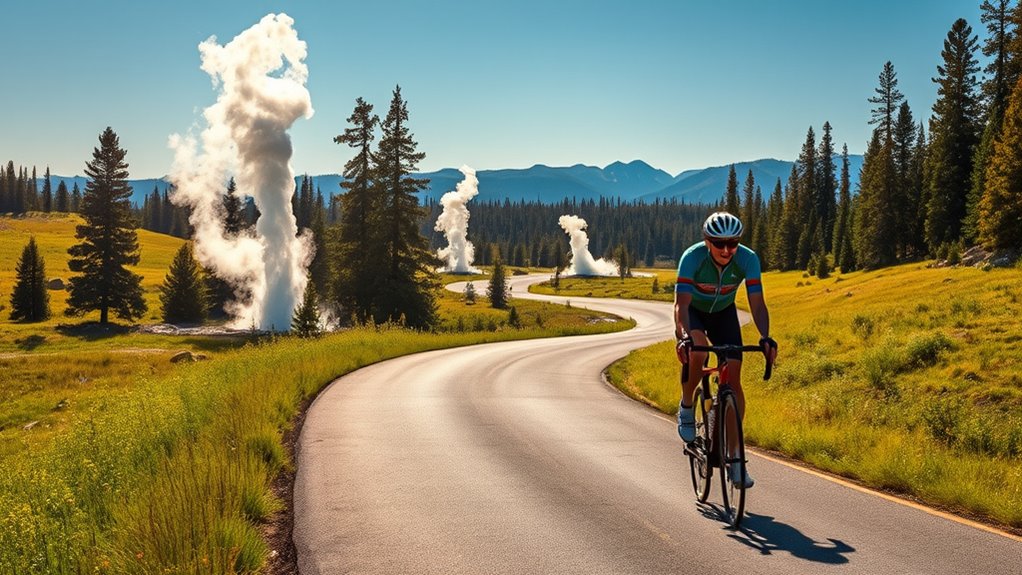
Cycling in Yellowstone during the different seasons offers a range of unique experiences that can enhance your adventure.
In spring, with select roads closed to cars, you can enjoy peaceful rides while spotting newborn wildlife. Be prepared for unpredictable weather, as sudden snow can occur, so pack layers and emergency gear. The West Entrance to Madison Junction route is especially scenic.
Fall, too, provides mild weather and fewer tourists, making it another ideal time to cycle. Remember, you’ll need to obtain permits at park entrances.
Whether you choose popular routes or venture off the beaten path, each season reveals the park’s stunning landscapes and diverse wildlife, making every cycling experience unforgettable. Additionally, having essential survival gear can significantly improve your safety and enjoyment during these outdoor adventures.
Frequently Asked Questions
Are There Any Guided Cycling Tours Available in Yellowstone?
Yes, you’ll find several guided cycling tours available in Yellowstone.
Operators like Teton Mountain Bike Tours, Lizard Head Cycling Guides, and Western Spirit Cycling offer various options, including mountain and road biking.
These tours usually last between 5 to 7 days and cater to intermediate to advanced riders.
You’ll explore iconic sites, enjoy scenic routes, and receive support from experienced guides throughout your adventure.
It’s a fantastic way to experience Yellowstone’s beauty!
What Are the Best Times to Visit for Fewer Crowds?
“Early bird gets the worm!” If you want to avoid crowds, consider visiting during the winter, spring, or fall.
Winter offers snowy landscapes but fewer access points. Spring brings mild weather and wildlife awakening, while fall features cooler temperatures and stunning foliage.
Aim for early morning visits or explore less popular trails to enjoy a more serene experience. Steer clear of July and August, as those months are the busiest for tourists.
Can I Bring My Own Bike Into Yellowstone?
Yes, you can bring your own bike into Yellowstone!
Just make sure you follow all the park’s biking regulations. You won’t need a special permit, but be prepared to ride on the roadways, as there are no dedicated biking paths.
Remember to wear a helmet and bright clothing for safety.
Also, keep in mind that you’ll need to pay a $20 entrance fee per person when you enter the park.
Are There Bike Repair Stations Along the Routes?
There aren’t any bike repair stations along Yellowstone’s routes, so you’ll need to be self-sufficient.
If your bike needs service, the nearest repair options are likely in West Yellowstone. It’s a good idea to carry basic repair tools and know how to fix common issues.
Keep in mind that Yellowstone’s unpredictable weather can affect your ride, so prepare for emergencies and ensure you have the necessary gear before hitting the trails.
What Accommodations Are Available for Non-Cyclists in the Park?
When you’re looking for a place to stay in Yellowstone, you’ve hit the jackpot!
Accommodations range from the historic Old Faithful Inn, perfect for witnessing geysers, to the charming Lake Yellowstone Hotel.
If you prefer a cozier vibe, Canyon Lodge offers modern cabins.
For unique experiences, try Mammoth Hot Springs Hotel.
Outside the park, West Yellowstone and Gardiner provide various lodging options, ensuring you’ll find the perfect spot to rest after your adventures.
Conclusion
As you gear up to explore Wyoming’s Yellowstone roads, remember that each pedal stroke brings you closer to breathtaking landscapes and unique geothermal features. Picture yourself cycling past Old Faithful, feeling the warm mist on your face while spotting bison grazing nearby. Don’t forget to pack your camera for unforgettable moments! Embrace the thrill of the ride and the beauty of nature; it’s an adventure you won’t want to miss. Happy cycling!
